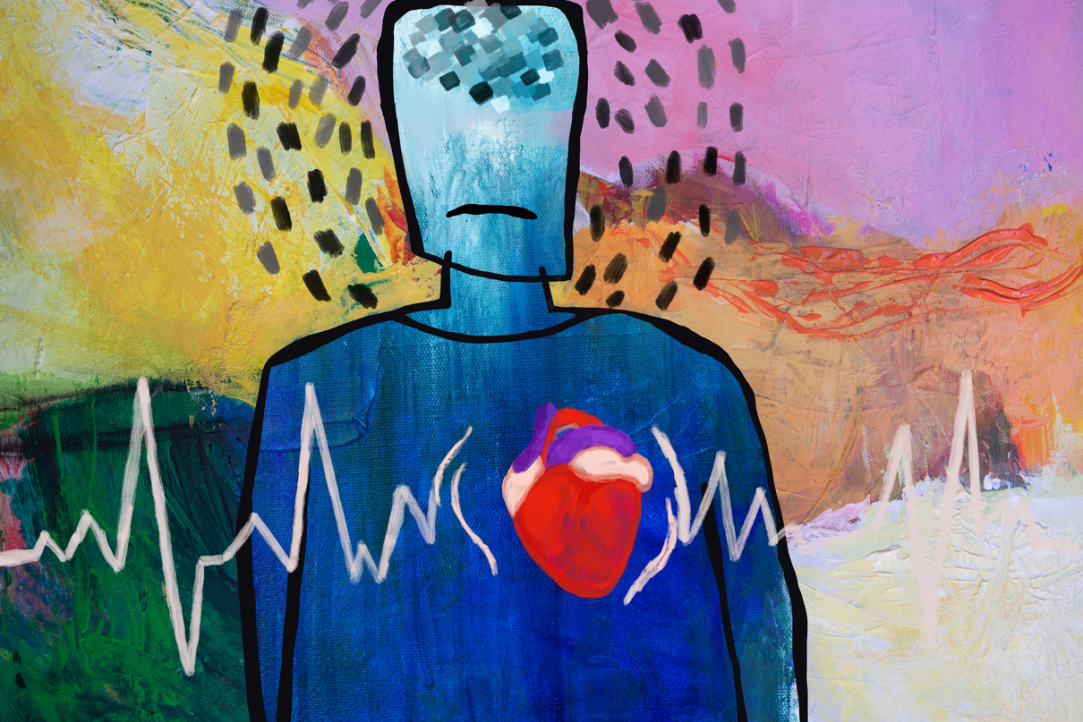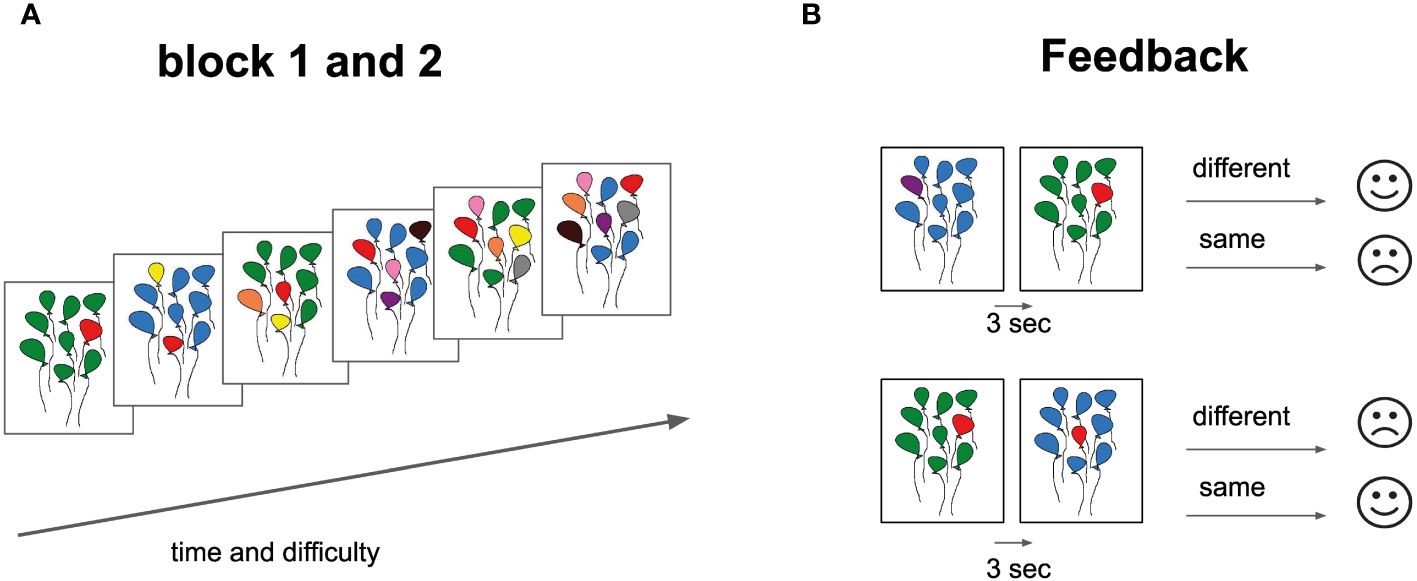HSE Scientists Propose Using Heart Rate Analysis to Diagnose Anxiety and Depression

A group of scientists at HSE University have discovered how anxiety and depression can be diagnosed by analysing heart rate. It turns out that under mental stress, the heart rate of individuals with a predisposition to mental health disorders differs from that of healthy individuals, especially when performing more complex tasks. These changes in cardiovascular parameters can even be detected using a pulse oximeter or a smartwatch. The study findings have been published in Frontiers in Psychiatry.
According to the World Health Organization, one in five adults under the age of 30 suffers from depression or an anxiety disorder. To prevent the development of mental health conditions and treat them effectively, reliable personalised diagnostic methods are needed.
Today, many technology companies are developing mental health analysis systems based on heart rate data. Various wearable devices, such as smartwatches, bracelets, rings, and others, are used for this purpose. However, it is important not only to record changes in heart rate but also to interpret them accurately.
Scientists at HSE University, in collaboration with the Russian Academy of Sciences Institute of Higher Nervous Activity and Neurophysiology, conducted a study to determine whether signs of depression and anxiety can be detected through changes in heart rate during cognitive tasks. They performed an experiment with 90 subjects, aged 18 to 45, some of whom had a history of anxiety and depression episodes.
Participants completed memory and attention tasks that gradually increased in complexity: they were instructed to view images of coloured balls and compare each one with the previous one to identify colour matches. As the difficulty level increased, participants had to memorise more balls and colours.
During the experiment, participants' heart rates were recorded using an electrocardiogram (ECG), while simultaneously photoplethysmography (PPG) was conducted to analyse heart function based on changes in blood volume in peripheral vessels. This simple, non-invasive method allows data to be read from the finger or wrist; PPG is the technology used in all wearable devices today.

Data analysis revealed that individuals with higher levels of anxiety or depression exhibited more pronounced changes in heart rate, particularly during complex tasks.
'When faced with a challenging task, people experience stress. They can make mistakes, which is normal and does not necessarily indicate a mental health issue. However, at a critical point of increasing complexity—when the task is still manageable but requires maximum attention—individuals with signs of mental disorders exhibit a higher average heart rate, resulting in a more pronounced and distinct pattern of heart rate variability,' explains Evgeniia Alshanskaia, Junior Research Fellow at the Institute for Cognitive Neuroscience.
A key aspect of the experiment was the comparison of data obtained using EEG and PPG. Although EEG is traditionally regarded as a more reliable method for measuring heart rate variability, the study indicated that PPG might be a more sensitive tool for assessing depression and anxiety. The scientists attribute this to the specific characteristics of the sympathetic nervous system.
'Under stress, noradrenaline, which is linked to attention, is activated first, followed by the activation of adrenaline, which prepares the body for action and triggers the "fight or flight" response. Our heart rate increases, and our blood pressure rises. Noradrenaline also acts on receptors that induce vasoconstriction. At this stage, changes in the pulse wave can be observed using PPG. Only afterward is adrenaline released from the adrenal glands, which amplifies and prolongs the body's stress response, causing the heart to beat faster. Subsequently, changes are observed on the ECG. This indicates that PPG is a relatively reliable method that is also more accessible, faster, and informative compared to ECG,' according to Alshanskaia.
The study demonstrates that changes in heart rate in response to increasing cognitive load can serve as an early biomarker for anxiety and depressive disorders. Additionally, the findings from the experiment open new opportunities for developing algorithms for wearable devices and applications that can monitor a person’s psychological state in real time. Early, personalised, and non-invasive diagnosis of depressive and anxiety disorders through heart rate analysis could significantly transform the approaches to treatment and prevention of mental health conditions in the future.
The study was conducted within the framework of the Strategic Project 'Success and Self-Sustainability of the Individual in a Changing World' (Priority 2030 programme).
See also:
Scientists Develop AI Tool for Designing Novel Materials
An international team of scientists, including researchers from HSE University, has developed a new generative model called the Wyckoff Transformer (WyFormer) for creating symmetrical crystal structures. The neural network will make it possible to design materials with specified properties for use in semiconductors, solar panels, medical devices, and other high-tech applications. The scientists will present their work at ICML, a leading international conference on machine learning, on July 15 in Vancouver. A preprint of the paper is available on arxiv.org, with the code and data released under an open-source license.
HSE Linguists Study How Bilinguals Use Phrases with Numerals in Russian
Researchers at HSE University analysed over 4,000 examples of Russian spoken by bilinguals for whom Russian is a second language, collected from seven regions of Russia. They found that most non-standard numeral constructions are influenced not only by the speakers’ native languages but also by how frequently these expressions occur in everyday speech. For example, common phrases like 'two hours' or 'five kilometres’ almost always match the standard literary form, while less familiar expressions—especially those involving the numerals two to four or collective forms like dvoe and troe (used for referring to people)—often differ from the norm. The study has been published in Journal of Bilingualism.
Overcoming Baby Duck Syndrome: How Repeated Use Improves Acceptance of Interface Updates
Users often prefer older versions of interfaces due to a cognitive bias known as the baby duck syndrome, where their first experience with an interface becomes the benchmark against which all future updates are judged. However, an experiment conducted by researchers from HSE University produced an encouraging result: simply re-exposing users to the updated interface reduced the bias and improved their overall perception of the new version. The study has been published in Cognitive Processing.
Mathematicians from HSE Campus in Nizhny Novgorod Prove Existence of Robust Chaos in Complex Systems
Researchers from the International Laboratory of Dynamical Systems and Applications at the HSE Campus in Nizhny Novgorod have developed a theory that enables a mathematical proof of robust chaotic dynamics in networks of interacting elements. This research opens up new possibilities for exploring complex dynamical processes in neuroscience, biology, medicine, chemistry, optics, and other fields. The study findings have been accepted for publication in Physical Review Letters, a leading international journal. The findings are available on arXiv.org.
Mathematicians from HSE University–Nizhny Novgorod Solve 57-Year-Old Problem
In 1968, American mathematician Paul Chernoff proposed a theorem that allows for the approximate calculation of operator semigroups, complex but useful mathematical constructions that describe how the states of multiparticle systems change over time. The method is based on a sequence of approximations—steps which make the result increasingly accurate. But until now it was unclear how quickly these steps lead to the result and what exactly influences this speed. This problem has been fully solved for the first time by mathematicians Oleg Galkin and Ivan Remizov from the Nizhny Novgorod campus of HSE University. Their work paves the way for more reliable calculations in various fields of science. The results were published in the Israel Journal of Mathematics (Q1).
‘The Development of Creative Industries Has Become a Priority for Both Russia and Uzbekistan’
The Tourism Development Institute under the Committee for Tourism of the Republic of Uzbekistan and HSE University have signed a cooperation agreement aimed at establishing and developing academic, cultural, and other partnerships in the fields of education and tourism. The initiative for signing the agreement came from the Institute for Creative Industries Development at the HSE Faculty of Creative Industries.
Large Language Models No Longer Require Powerful Servers
Scientists from Yandex, HSE University, MIT, KAUST, and ISTA have made a breakthrough in optimising LLMs. Yandex Research, in collaboration with leading science and technology universities, has developed a method for rapidly compressing large language models (LLMs) without compromising quality. Now, a smartphone or laptop is enough to work with LLMs—there's no need for expensive servers or high-powered GPUs.
AI to Enable Accurate Modelling of Data Storage System Performance
Researchers at the HSE Faculty of Computer Science have developed a new approach to modelling data storage systems based on generative machine learning models. This approach makes it possible to accurately predict the key performance characteristics of such systems under various conditions. Results have been published in the IEEE Access journal.
MIEM Begins Open Testing of Claw Engine 2.0
The team at MIEM’s Game Engineering and Interactive Systems studio has begun open testing of the second version of its game engine, Claw Engine. The HSE News Service takes a closer look at the product, which is being developed by MIEM’s student project teams.
Researchers Present the Rating of Ideal Life Partner Traits
An international research team surveyed over 10,000 respondents across 43 countries to examine how closely the ideal image of a romantic partner aligns with the actual partners people choose, and how this alignment shapes their romantic satisfaction. Based on the survey, the researchers compiled two ratings—qualities of an ideal life partner and the most valued traits in actual partners. The results have been published in the Journal of Personality and Social Psychology.



